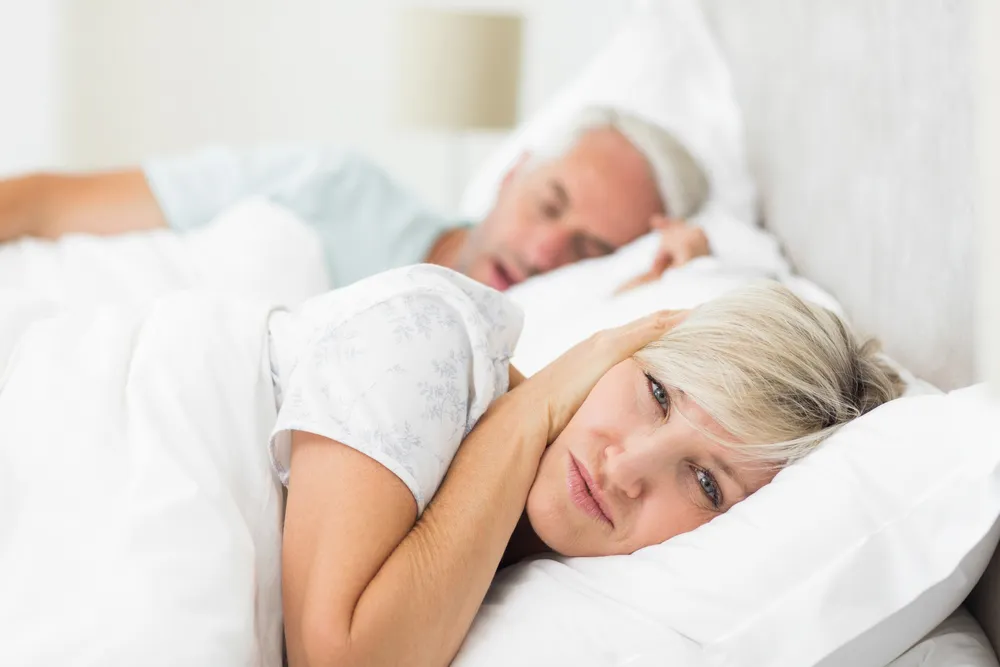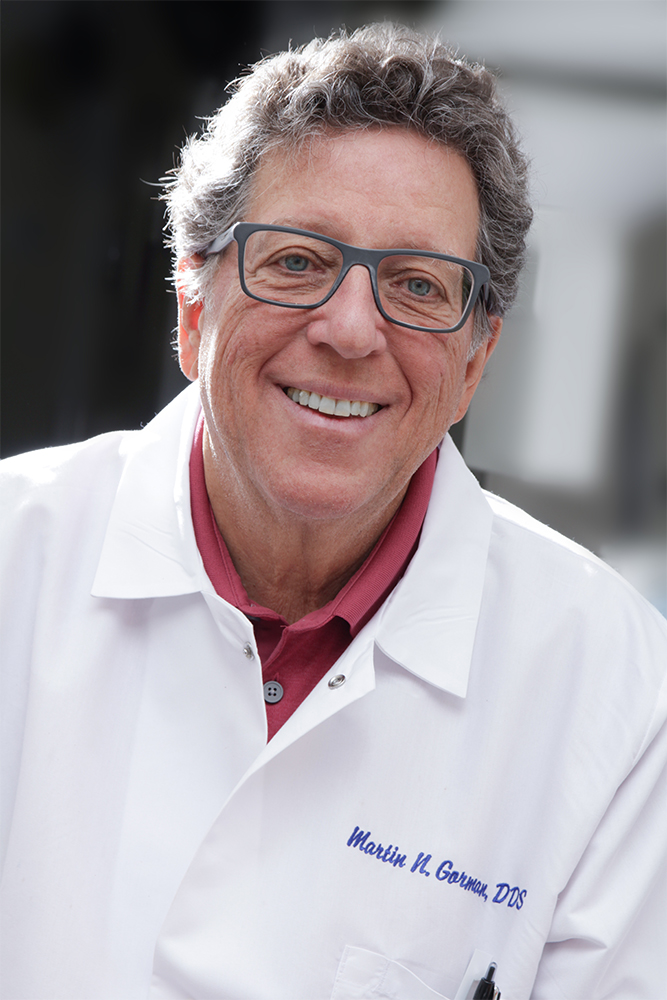Sleep Apnea & Snoring: Treating the Root Cause
Stop Suffering From Sleep Apnea
I have been helping people suffering from Sleep Apnea with a non-invasive, clinically approved treatment method. This method has allowed my patients to sleep with far fewer events per hour allowing them to get rid of their CPAP and BiPAP machines. Imagine not having to use one of those machines, getting back a much greater quality of life along with the benefits of being able to breathe better. To see if this groundbreaking treatment is right for you please fill out the form to schedule a time for a FREE consultation, this is a $500 value.
Interview with Dr. Gorman
In this in-depth interview, Dr. Gorman (Snoring Doctor in Encino, Los Angeles) reveals the latest advances in treating Sleep Apnea, Snoring, and Airway issues.
Call 1 818.995.1891 or Complete the Form
to Schedule a FREE Consultation
with Sleep Apnea Doctor in Encino, Los Angeles
Patient Testimonials for Sleep Apnea
What Is Sleep Apnea?

Sleep apnea is a prevalent condition that is characterized by frequent pauses in breathing when a person sleeps. According to the National Sleep Foundation, more than 18 million people in the United States suffer from sleep apnea, many of whom have not been officially diagnosed. When sleep apnea goes unnoticed, people cannot receive the treatment they need. Initially, this can lead to daily issues such as headaches, fatigue, and poor memory. Over time, sleep apnea can lead to more serious health concerns, including diabetes, hypertension, and stroke. Although sleep apnea can be a dangerous condition, Dr. Martin Gorman offers effective treatment options to manage the condition to reduce the risk of developing life-threatening problems.
To learn more about sleep apnea and the advantages of treatment with Dr. Gorman, we invite you to browse the sections on this page and/or contact our practice today to schedule an appointment.
Sleep Apnea Types
Sleep apnea can be categorized into three different types:
- Obstructive Sleep Apnea: The most common form, obstructive sleep apnea (OSA) occurs when the airway has been blocked, such as from tissue relaxing in the back of the throat.
- Central Sleep Apnea: When central sleep apnea (CSA) is present, the brain does not send the proper signals to the muscles responsible for breathing.
- Mixed Sleep Apnea: Mixed, or complex, sleep apnea involves a combination of both central and obstructive sleep apnea.
The best form of treatment will vary based on which type of sleep apnea has developed. To learn about the next steps for addressing your condition, you will first need to schedule a sleep study to receive a diagnosis, after which you can discuss your treatment options with Dr. Gorman.
Causes of Sleep Apnea
Obstructive sleep apnea is caused by the the muscles and soft tissues in the throat, mouth, or nose relaxing to the point of narrowing the breathing passages. As the airway becomes smaller, breathing becomes more difficult, and the tissues in the back of the throat may begin to vibrate with every breath, due to forcing air through the decreased space. These vibrations produce the sound we associate with snoring. Although snoring does not always mean a person has sleep apnea, this may be a warning sign they are not getting enough oxygen at night. In addition to snoring loudly, people suffering from sleep apnea may experience several pauses in breathing, lasting 10 seconds or more.
Since sleep apnea reduces a person’s ability to breathe properly, possibly limiting the oxygen to their brain, it is vital for those who suspect may have the condition to seek our treatment.
Sleep Apnea Signs and Symptoms
While some people may notice they have obstructive sleep apnea, most cases are first discovered by family members. This is because the signs and symptoms are more obvious to those around the sufferer. Common indications that a person has sleep apnea include:
- Loud snoring.
- Gasping or choking during the night.
- Headaches in the morning.
- Sore throat or dry mouth after waking up.
- Difficulty remembering and concentrating.
- Increased need to urinate during the night.

These symptoms typically occur because the individual cannot breathe properly as they sleep, disrupting their quality of sleep. As a result, people tend to feel especially fatigued throughout the day and may have issues trying to stay awake.
Do I Have Obstructive Sleep Apnea (OSA)?
Although OSA is the most common manifestation of sleep apnea, the breathing disorder commonly goes undiagnosed because key symptoms—such as snoring and pauses in breathing—occur at night while a patient is asleep. Nevertheless, obstructive sleep apnea can pose a great risk to an individual’s health and well-being, with these disruptions in breathing often culminating in daytime symptoms as well as cardiovascular and blood pressure problems. A consultation with Dr. Gorman can help determine whether you may be affected by obstructive sleep apnea (an official diagnosis can be obtained from a physician), but the following checklist can help you gain a more thorough understanding of whether your symptoms may be an indication of OSA:
- I snore. Since snoring typically acts as the response to a partially closed airway, snoring can be a telltale sign of the excessive relaxation of soft tissues in the throat (a symptom of OSA). It is estimated that one in three patients who snore are affected by obstructive sleep apnea.
- I breath through my mouth. Mouth breathing cancels the ability to filter out pollutants, allergens, pesticides, smog, pollen, and other microbes when taking in oxygen, often causing swelling and inflammation of the throat that can restrict the airways.
- I often feel tired and unenergetic during the day. Daytime sleepiness is a common symptom of obstructive sleep apnea, as patients who experience frequent pauses in breathing while asleep may fail to spend adequate time in the deeper sleep stages, resulting in fatigue and sleepiness throughout the day.
- I have a chronic cough, sore throat, or difficulty swallowing. Throat issues have a high correlation to cases of OSA, with conditions like Gastroesophageal Reflux Disease (GERD) and sleep apnea often occurring together. A dry mouth and sore throat upon waking up can be an effect of breathing through the mouth, which is considered dysfunctional breathing that is likely to inflame the tissues of the throat.
When your breathing pauses for more than ten seconds at a time while asleep (an event characteristic of sleep apnea), the “fight or flight” response in the Sympathetic Nervous System activates and releases stress hormones—such as cortisol—into the bloodstream. These elevated cortisol levels can result in increased blood pressure, cardiac arrhythmia, an increased hunger drive, and other health hazards over time if the breathing disorder is left untreated. For these reasons, timely evaluation of your symptoms and proactive treatment is essential.
What Are the Risks of Sleep Apnea?
Sleep apnea that goes untreated can lead to a wide range of issues. People living with the condition who do not receive prompt treatment are at a higher risk of experiencing the following:
- Loud Snoring
- Snorting or Gasping for Air
- Frequent Nighttime Urination
- Morning Headaches
- Irritability
- Daytime Sleepiness
- Memory Loss
- Lack of Energy
- Drowsy Driving
- Excessive Stress
- Cardiovascular Strain
- Erectile Dysfunction
- Increased Risk for Accidents
- Weight Gain
- Depression
- High Blood Pressure
- Stroke

Sleep Apnea Treatments Encino, Los Angeles

Dr. Gorman: The Breathing Wellness Movement
Dr. Gorman is a part of the breathing wellness movement, which aims to increase awareness and improve treatment for sleep-related airway conditions like sleep apnea. He has partnered with organizations focused on collaborating with dentists to apply the sciences of Craniofacial Epigenetics (the study of cranial modifications caused by gene expression as opposed to genetic code alteration) and Pneumopedics® (the practical application of oral appliance therapy and non-surgical airway remodeling) in the management of sleep apnea. Together, the application of these sciences allows for underlying causes of airway obstruction to be treated in 98% of cases, resulting in a high success rate among sleep apnea patients.
For every sleep apnea case at our practice, Dr. Gorman will gather patient data and determine the patient’s specific needs based on home sleep test results, dental impressions, CT scan, and images. Our state-of-the-art technology paired with Dr. Gorman's experience with sleep disorders allows him to find the most effective treatment plan for each individual’s particular case, yielding improved daytime and nighttime breathing for the patient.
Frequently Asked Questions About Sleep Apnea
How often will I need to wear my TMJ oral appliance?
Website Administrator2023-12-19T16:31:52-08:00While the exact answer to this question will depend on your unique treatment plan, Dr. Gorman generally recommends patients wear their TMJ oral appliance every night as they sleep. The pressure applied by the appliance works to gradually move the teeth and/or jaw(s) into proper position. Once optimal occlusion is achieved, the device helps maintain ideal positioning.Do jaw exercises for TMJ work?
Website Administrator2023-12-19T16:31:24-08:00While jaw stretching, massaging, and various other TMJ home remedies may help temporarily alleviate TMJ pain for some people, the relief provided by these exercises is typically just that—temporary. Complete, lasting resolution of TMD can usually only be achieved via professional treatment that targets the underlying cause(s) of the condition.How long does TMJ last? Will it resolve on its own?
Website Administrator2023-12-19T16:29:59-08:00If left untreated, TMJ disorder may persist forever, never resolving on its own. In fact, it might actually worsen over time, causing symptoms to progressively increase in severity. Like most health-related conditions, being evaluated by and receiving treatment from a qualified professional like Dr. Gorman is the best way to resolve TMD.Why does TMJ disorder cause pain in other areas?
Website Administrator2023-12-19T16:29:40-08:00Similar to the way changing how you walk to accomodate a sore ankle can eventually cause aching in the hips or lower back, continual malfunction of the temporomandibular joint can lead to discomfort elsewhere in the body since the muscles in various other areas must adapt accordingly and act irregularly. Areas outside of the head and jaw that are most commonly affected by TMD include the shoulders, neck, and back.What is the prognosis for TMJ disorder?
Website Administrator2023-12-19T16:29:26-08:00Prognosis for TMD is good, as most individuals respond well to treatment. Success rates of treatment are significantly enhanced when a comprehensive approach that addresses occlusion, muscle/joint balance, and stress management is employed.Would I be a good candidate for cosmetic dentistry?
ND-Hareem2023-11-20T02:23:44-08:00Anyone can have cosmetic dental work done if their mouth is in a good state of oral health. A comprehensive examination will tell our experienced cosmetic dentist, Dr. Martin Gorman, what steps need to be taken to prepare your mouth for dental work. Concerns may include gum problems, decay, or jaw alignment abnormalities. Once these problems are corrected, Dr. Gorman can create your new smile and feel confident that with proper care, it will last a lifetime.How long does it take to achieve a gorgeous smile?
ND-Hareem2023-11-20T02:24:18-08:00Treatment time will depend upon the procedures you want. For instance, Zoom! Whitening takes about an hour in our office. Placing veneers normally requires two appointments. Complex restorative work may be done in phases, over weeks or months. We will let you know the time frame, financial information, and clinical procedure associated with your treatment plan so that you can make a truly informed decision about your dental care.Wouldn’t whitening be sufficient to give me the attractive look I desire?
ND-Hareem2023-11-20T02:25:59-08:00If you have a straight, shapely, beautiful smile, free from damage and wear, teeth whitening may be all you need to freshen up your appearance. Most patients, however, want to reshape their front teeth, repair cracks, chips, or missing teeth, and whiten existing dentition for a spectacular smile makeover. Cosmetic dentist Dr. Gorman will discuss your smile goals and let you know the best way to achieve them.Contact Gorman Health and Wellness
Call 1 818.995.1891 or Complete the Form
to Schedule a FREE Consultation
with Sleep Apnea Doctor in Encino, Los Angeles